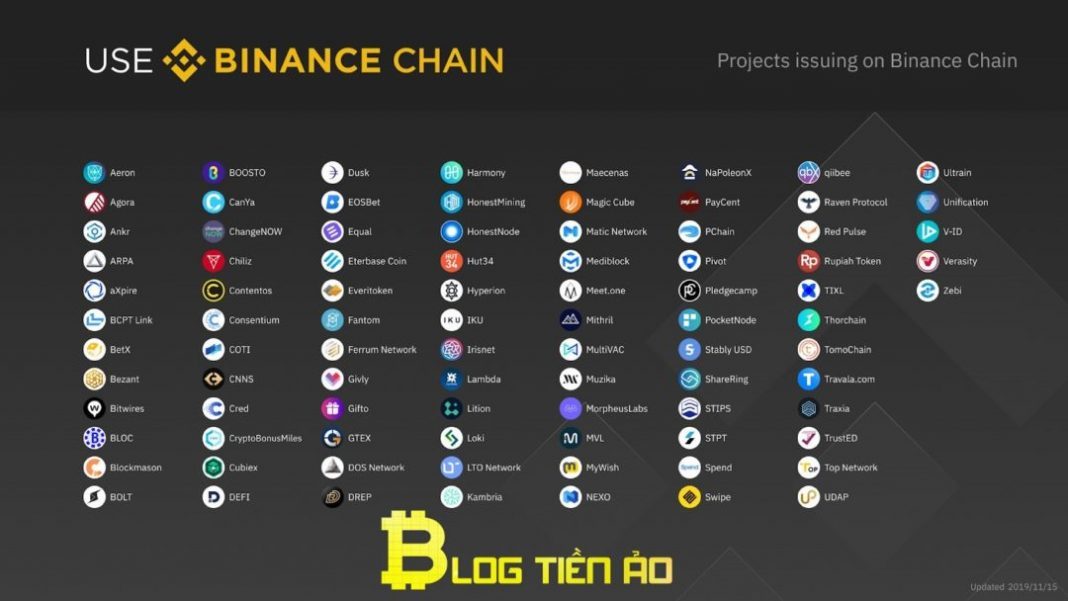
MULTICHAIN ETHEREUM BINANCE CHAIN LABSPARTZCOINTELEGRAPH SOFTWARE
Polygon's software development kit enables the building of Ethereum sidechains - blockchains linked to Ethereum via a two-way peg. Polygon has a bunch of products and services to solve this problem. The Ethereum blockchain is slow and costly. In terms of transactional finality, Avalanche (less than 2 seconds) leads as compared to Bitcoin (60 minutes), Ethereum (6 minutes), and Polkadot (60 seconds).ĪVAX is Avalanche's native token and it can be used for staking, paying fees, and providing a unit of account between the multiple subnetworks created on Avalanche.Ĭonsensus mechanism: Snow protocol family (leaderless Byzantine fault tolerance protocols) What I like the most about Avalanche is that it lets anyone launch customized private & public blockchains.Īvalanche, with a transactional throughput of more than 4,500 tps, performs phenomenally faster than Bitcoin (7 tps), Ethereum (14 tps), and Polkadot (1,500 tps). The top DeFi protocols that run on Avalanche are AAVE, Trader Joe, Wonderland, Benqi, and Curve. This can be easily done using the Binance Chain Wallet.Ĭonsensus mechanism: Proof of Staked AuthorityĪvalanche is a popular Decentralised Finance (DeFi) blockchain. Interestingly, BEP-2 and BEP-8 tokens from Binance Chain can be swapped for BEP-20 tokens on BSC. Instead, the supply of BNB decreases over time, because the Binance team regularly "burns" coins. Unlike Bitcoin, there is no block reward by way of newly minted BNB. Validators stake BNB and can receive transaction fees.

The native token of both blockchains is BNB. It runs parallel to the original Binance Chain, has smart contract functionality, and is compatible with the Ethereum Virtual Machine (EVM).īSC is an independent blockchain and is not a layer two or off-chain scalability solution.īinance Smart Chain has a block time of around 3 seconds. That's why Binance Smart Chain (BSC) was created. Asset-backed cryptos like tokenized stocks.īinance Chain, the first blockchain from Binance, is optimized for fast decentralized trading but lacks smart contracts and strong programmability.Innovative projects like Uniswap, Chainlink, Aave, Unstoppable Domains, Basic Attention Token, Polygon, and OpenSea.$100+ billion of fiat pegged & algorithmic stablecoins.The average Ethereum block time is 12 to 14 seconds.Įthereum started the concept of decentralised finance (DeFi) and today an amazing multi-billion dollar ecosystem has evolved around it: The gas fee is paid in ETH and denoted in gwei (0.000000001 ETH).īlock time is the time it takes to mine a new block (a bunch of transactions). Gas refers to the unit that measures the amount of computational effort required to execute specific operations on the Ethereum network.Įach Ethereum transaction requires a fee called " gas" because each transaction consumes computational resources. Then there are ERC-777 (improving ERC-20) and ERC-1155 (which contains both fungible and non-fungible assets). The most popular Ethereum standards are ERC-20 (for fungible tokens like stablecoins) and ERC-721 (for non-fungible tokens). EVM defines the rules for computing new valid states from one block to another.ĮVM exists as a single entity maintained by a large number of connected computers (nodes) running an Ethereum client such as Geth or OpenEthereum. A client is a software that enables nodes to read blocks on the blockchain and smart contracts. At any given block, Ethereum has only one "canonical" or unique state.

The sole purpose of the Ethereum protocol is to keep "the continuous, uninterrupted, and immutable operation" of the EVM. Smart contracts are programs that run automatically when some pre-defined conditions are met. One of the greatest blockchain innovations is the Ethereum Virtual Machine (EVM).ĮVM is "the environment in which all 'Ethereum' accounts and smart contracts live". The native crypto of this Ethereum is Ether (ETH). This is where actual-value transactions occur on the blockchain. When most people talk about Ethereum, they are talking about Mainnet - the primary public Ethereum production blockchain. Multiple independent blockchains run on the Ethereum protocol. It's NOT a cryptocurrency either! It's actually a protocol (a set of rules or procedures) like "HTTP" or "HTTPS." Sources: CoinMarketCap, Future Money Wallet, DefiLlama (rounded off)Įthereum is NOT a blockchain.

Total value locked (TVL) represents the total of all assets deposited in the protocol earning rewards, interest, new coins/ tokens, fixed income, etc.Market cap = Current Price x Circulating Supply.


 0 kommentar(er)
0 kommentar(er)
